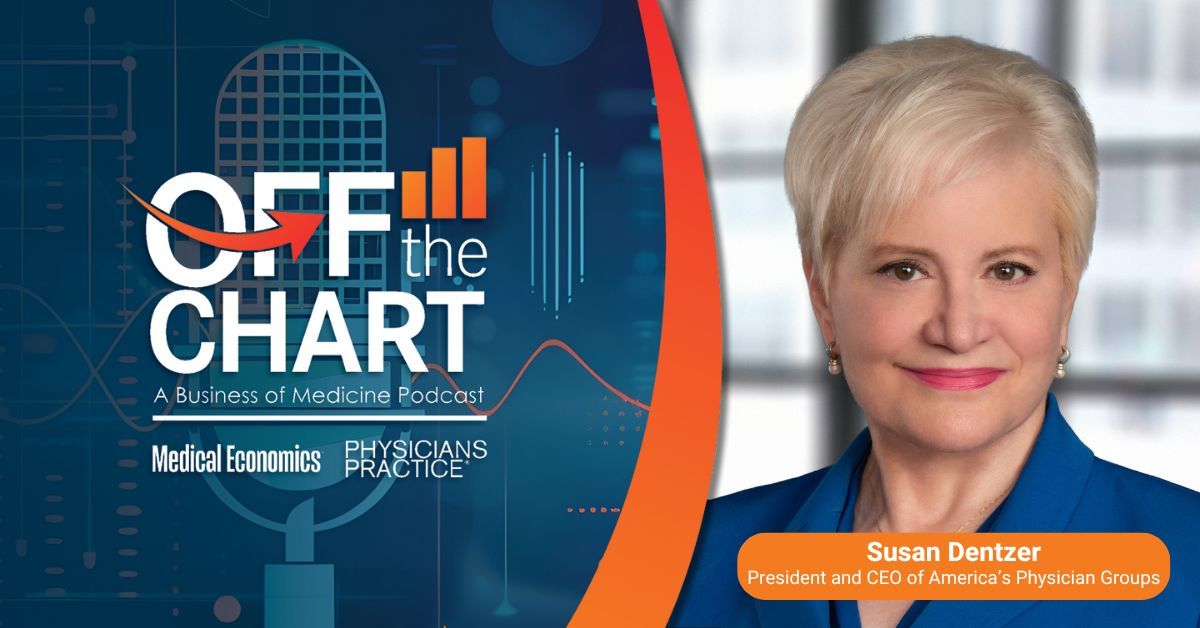Blog
Article
The vaccine pricing assault that threatens public health
Author(s):
Unpacking vaccine pricing: navigating policy, economics, and public health imperatives.
© anidimi - stock.adobe.com

The old Benjamin Franklin adage that an ounce of prevention is worth a pound of cure is increasingly forgotten. In spite of a global pandemic and the fragility of both the vaccines marketplace and vaccine confidence, some policymakers seem content to lose sustained investment in vaccine development.
The intensity of biopharmaceutical pricing scrutiny in the United States has reached a major inflection point, both for medicines used to treat disease and for vaccines that play an important role in preventing and mitigating disease and lowering overall health care and societal costs.
On March 19, a dozen members of Congress led by Sen. Bernie Sanders sent a letter to President Joe Biden, advocating for his Administration to push for more equitable access to vaccines, tests and drugs in a future pandemic as the United States continues negotiations in the World Health Organization Pandemic Accord. Among the points raised were that “[p]harmaceutical companies should not be allowed to charge outrageous prices for products developed with taxpayer dollars.”
Richard H. Hughes IV, JD, MPH
© Epstein Becker Green

The exaggerated rhetoric will potentially have consequences for vaccine innovation and, ultimately, public health. That is, undermining vaccine innovation and manufacturer market participation poses a risk that, when the next pandemic comes, we will not see speed in vaccine development and production. We may even live unnecessarily with endemic disease threats of the present and future, contributing to higher health care costs, economic losses and detrimental societal impacts.
An analysis two decades ago outlines the various market forces that have contributed to the fragility of the vaccines marketplace – the significant costs of making vaccines, the inability to command higher prices and an adequate return on investment, lack of adequate demand as a result of ever-increasing public complacency and hesitancy. Those factors, coupled with liability concerns, led to a decline over half a century in the number of vaccine manufacturers, dwindling from 26 in 1967, to 17 in 1980, to five in 2004. In 1996, the United States was supplied childhood vaccines by eight firms. That number dwindled to four by 2002.
Placing downward pricing pressure on an already fragile vaccines marketplace poses serious risks to the sustained investment in innovative new vaccines to prevent endemic diseases and future pandemic threats.
Why are vaccines so different?
Vaccines are used to prevent rather than treat disease, which, in turn, reduces overall health care costs and spending on therapeutic products. They are typically deployed in broad populations with the aim of achieving “herd immunity” that provides protection at the population level, not just against transmission but by lowering the overall incidence, mortality, morbidity and severity of disease.
Because vaccine uptake is, therefore, highly desirable and important for achieving public health goals, traditional utilization management techniques such as formulary management and patient cost sharing are considered a hindrance to vaccine uptake. This is why Congress strengthened payor coverage requirements and prohibited cost sharing across all major sources of coverage. Yet, lawmakers and even scholars time and time again speak as if patients directly encounter a vaccine’s commercial list price on a regular basis.
The federal government receives significant discounts on vaccine prices through contracts negotiated between government agencies such as the U.S. Centers for Disease Control and Prevention or Biomedical Advanced Research and Development Authority and manufacturers.
Vaccines have historically been excluded from drug pricing pressure such as mandatory rebates, reflective of their unique role in disease prevention and the aforementioned discounts. The Inflation Reduction Act (IRA) departs from this custom by not exempting vaccines from its price-setting regime.
Being in the business of vaccines entails highly complex, lengthy and costly research, development and manufacturing processes, and a very low success rate. Vaccines also represent only a small fraction of the biopharmaceutical sector’s collective revenue.
Public sector investments do and should complement private investments and offset opportunity costs when companies forgo more profitable investments to prioritize development and production of vaccines. Unlike governments, however, manufacturers bear the bulk of investment and associated risks and remain stewards of a vaccine throughout its full lifecycle, from preclinical development through manufacturing.
The U.S. government provides substantial financial support for research, development, production and purchase of vaccines and other medical countermeasures and those investments increased during the COVID-19 pandemic. However, the government’s investment has been fractional and we recognized 30 years ago that, “Unlike pharmaceutical giants, the federal government lacked the talent and expertise to develop vaccines.”
The majority of investment in mRNA platforms prior to the pandemic were from “high net worth individuals and big pharma.” This begs the question as to how possible rapid and successful vaccine development would have been without these prior investments. And while private sector vaccine development investments continue, the biopharmaceutical sector has little incentive to stay in the market. Venture capitalists invest 12 times as much in oncology drug development versus vaccines, and public companies invest only slightly more.
Policymakers mislead on vaccine prices
The COVID-19 pandemic has unfortunately been repeatedly used to politicize vaccine pricing. At the dawn of the pandemic, some lawmakers almost instantaneously equated the price of then non-existent vaccines with patient access. Such political grandstanding overlooks the myriad private sector vaccine investments, discussed above. It also overlooks the significant public pricing discounts and patient out of pocket protections for vaccines. Pricing has become a mistaken obsession ever since.
In a Senate Health, Education, Labor and Pensions Committee hearing a year before sending the March 19 letter, senators lambasted the CEO of Moderna with all manner of falsehoods, overstating the role of government funding for COVID-19 vaccines and downplaying the significant financial outlays by vaccine innovators.
The rhetoric continued in the form of the recent letter to the Biden administration, which followed the Biden administration’s earlier announcement of “fair pricing rules” that would allow the U.S. Department of Health and Human Services pandemic countermeasures procurement agency, the Administration for Strategic Preparedness and Responses, to include commercial price controls in its contracts with manufacturers. The government seems to be doing all it can to control prices even if neither it nor patients will ever pay that price.
For some reason, these lawmakers and the Biden administration continuously decline to acknowledge the patient vaccine out-of-pocket protections and the deep price discounts received by the federal government and even private payers.
There is no dispute that over 20 million American adults lack health insurance and therefore face barriers to vaccine access. This author has advocated for addressing this gap with the creation of an adult vaccine safety net that features discounted vaccine pricing, much akin to the existing Vaccines for Children program.
The economics of vaccine recommendations
Perhaps emboldened by the political rhetoric, members of the Advisory Committee on Immunization Practices (ACIP), last year insisted that manufacturers publicly share pricing information, comparing the committee’s vote to buying a new car and threatening to delay votes.
The insistence that competitors discuss prices raises antitrust concerns for industry. It also departs from the customary considerations of cost through analytical cost effectiveness models rather than the “gut reaction” to a single data point by an individual committee member.
Even the use of economic models has been problematic for vaccines. ACIP uses Quality-Adjusted Life Years (QALYs), a controversial, “one-size-fits-all” metric that is forbidden under the Affordable Care Act (ACA) to be applied to Medicare and disallowed under the IRA’s approach to price-setting.
Yet, past committee members have expressed concerning resignation over the negative consequences of such rigid economic analysis, stating that they will simply be “difficult to implement because of their specificity.”
A measure to ban the use of QALYs in Medicare and Medicaid coverage decisions has narrowly passed the House, though it would not forbid ACIP to use them. While unlikely to pass the Senate, the measure has been met with support by disability and patient advocates because such rigid measures may not appropriately value the health of especially vulnerable groups such as the disabled and elderly and may impede equitable access to care for these groups.
Indeed, ACIP's use of such generic cost effectiveness analysis excludes many indirect and broader societal and economic benefits of vaccines, therefore inherently undervaluing vaccines. In the mid-1990s this delayed its decision to recommend the varicella (chickenpox) vaccine until it considered the additional impact of parental work loss.
A mother’s March 1995 letter to the editor published in The New York Times reveals the very real impact of withholding vaccines on the basis of economic modeling: “I do not regard chicken pox as a benign childhood illness. Apparently a vaccine was available in 1990, but cost-benefit considerations kept it off the market. If my family’s experience [children with two strep throats, mononucleosis and complications including hepatitis] is any indication, this appears to be one more instance of how misleading and cruel such calculations can be.”
Recent ACIP discussion of rolling back longstanding, routine adolescent vaccine recommendations based on similar economic rationale threatens to increase risks of a potentially devastating infectious disease such a meningitis and its sequelae – seizures, organ failure, deafness, blindness, cognitive decline and limb loss.
Conclusion
Vaccine innovation is not inevitable, nor is it the sole product of public sector contributions. Disingenuous political rhetoric that obfuscates the realities of patient out-of-pocket protections and steep price discounts to government programs is unfortunately a form of misinformation.
We live in an era where misinformation concerning vaccines stands to imperil vaccine confidence. If lawmakers are serious about ensuring access to vaccines, they should instead invest political capital in efforts to build safety net infrastructure.
Moreover, there are human costs associated with the inevitable non-development of future vaccines that would suppress emerging disease threats and those for which we cannot today prevent without new vaccines. Political persistence down this path imperils public health.
Richard H. Hughes, IV, JD, MPH, is a partner at Epstein, Becker & Green and a professorial lecturer in law at The George Washington University Law School and a nationally recognized vaccine thought leader who has led many efforts to expand access to vaccines and preventive services and improve public health outcomes. He was vice president of public policy at Moderna, managing director at Avalere Health, and held roles with Merck, the Association of State and Territorial Health Officials, and the Arkansas State Board of Health.
Newsletter
Stay informed and empowered with Medical Economics enewsletter, delivering expert insights, financial strategies, practice management tips and technology trends — tailored for today’s physicians.





